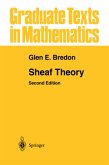Group cohomology has a rich history that goes back a century or more. Its origins are rooted in investigations of group theory and num ber theory, and it grew into an integral component of algebraic topology. In the last thirty years, group cohomology has developed a powerful con nection with finite group representations. Unlike the early applications which were primarily concerned with cohomology in low degrees, the in teractions with representation theory involve cohomology rings and the geometry of spectra over these rings. It is this connection to represen tation theory that we take as our primary motivation for this book. The book consists of two separate pieces. Chronologically, the first part was the computer calculations of the mod-2 cohomology rings of the groups whose orders divide 64. The ideas and the programs for the calculations were developed over the last 10 years. Several new features were added over the course of that time. We had originally planned to include only a brief introduction to the calculations. However, we were persuaded to produce a more substantial text that would include in greater detail the concepts that are the subject of the calculations and are the source of some of the motivating conjectures for the com putations. We have gathered together many of the results and ideas that are the focus of the calculations from throughout the mathematical literature.
From the reviews: "The cohomology of groups was developed to be ... a powerful tool in the study of group representations. ... Some other books concerning the cohomology of finite groups have appeared, but they are at least ten years old, and the computational tools that have been developed since then, make this book to be really valuable for both professionals and students. ... This book is almost self-contained and it is very useful ... for all of those that are using the cohomology instruments in their work." (Viorel Mihai Gontineac, Zentralblatt MATH, Vol. 1056 (7), 2005)








